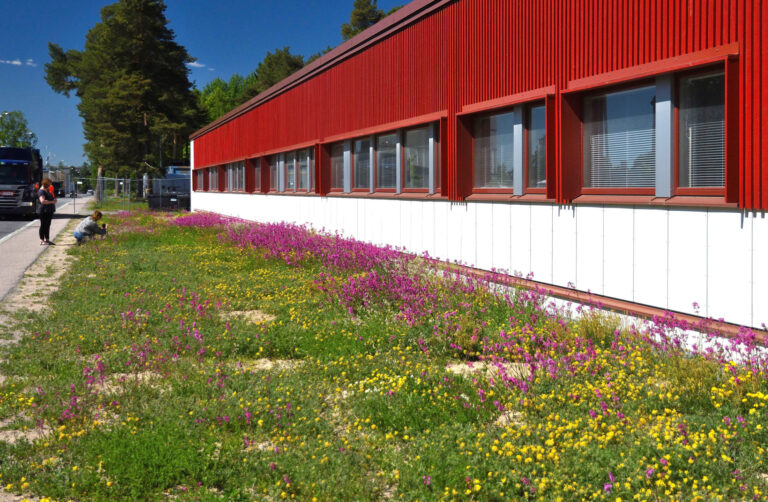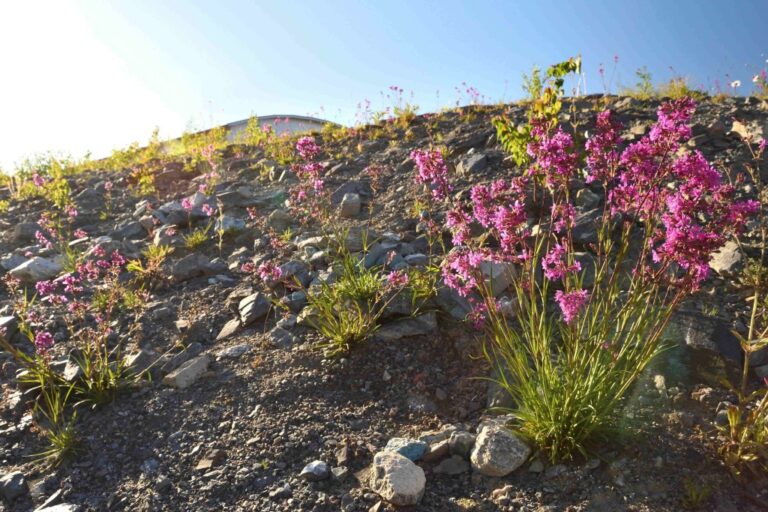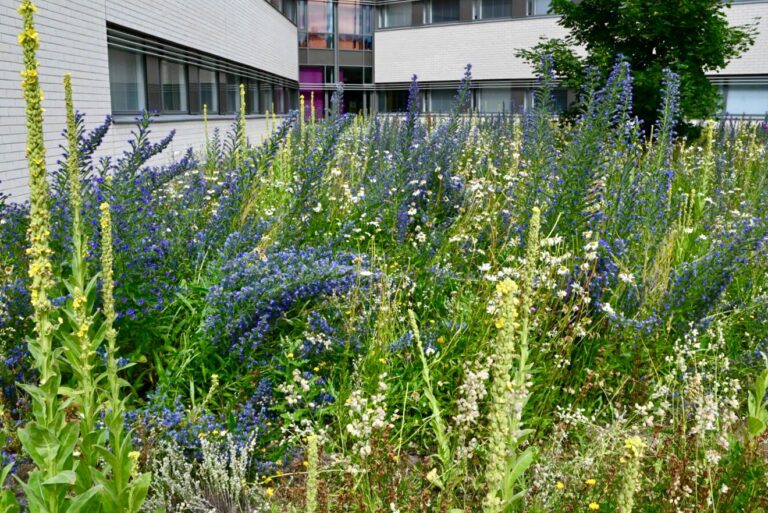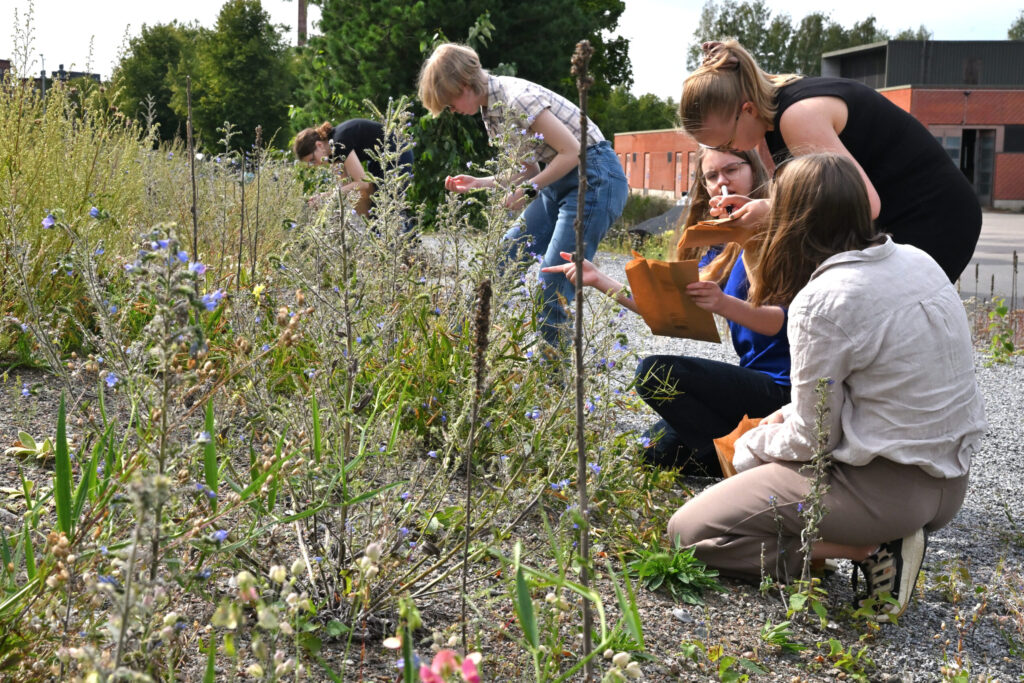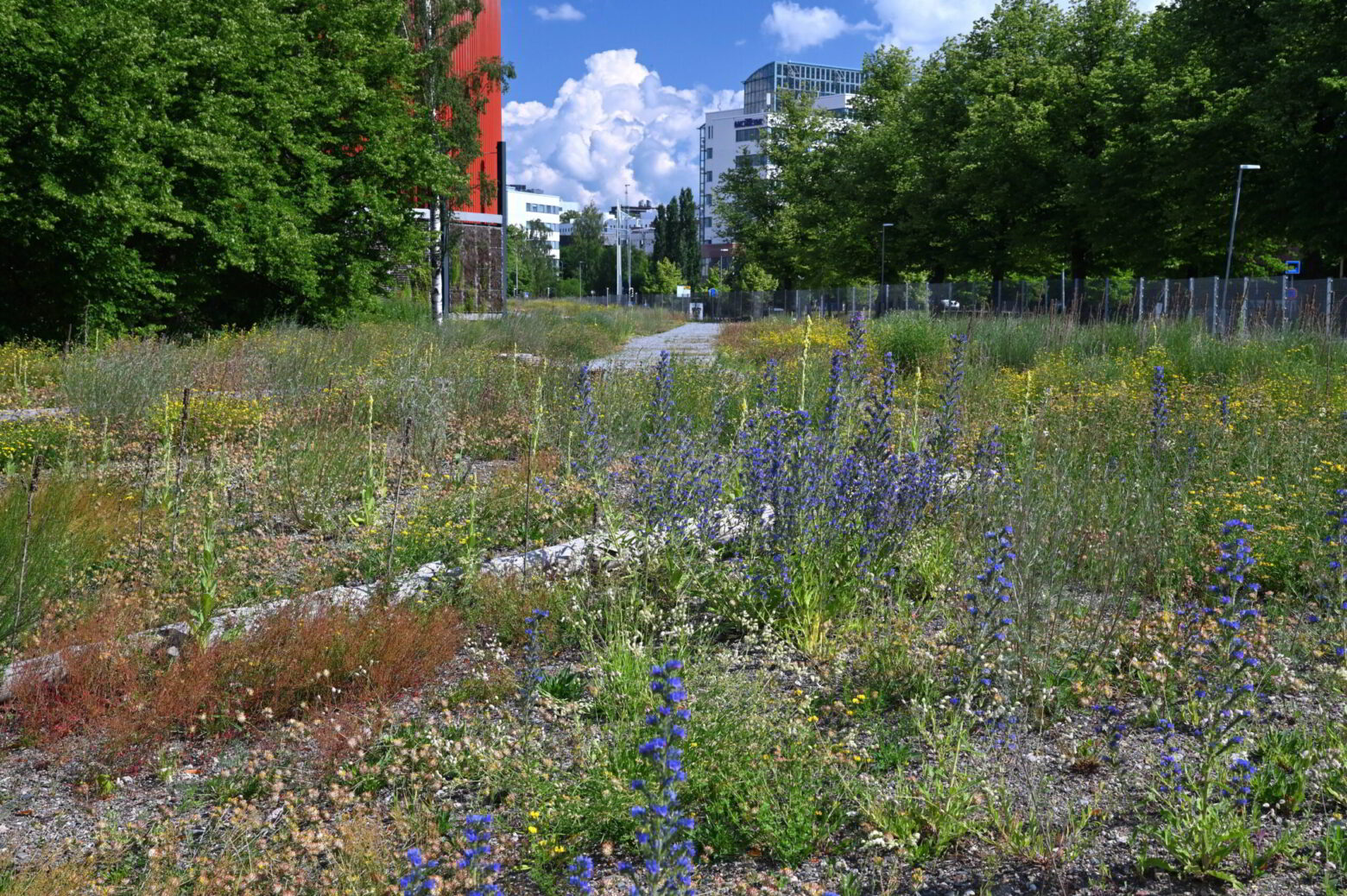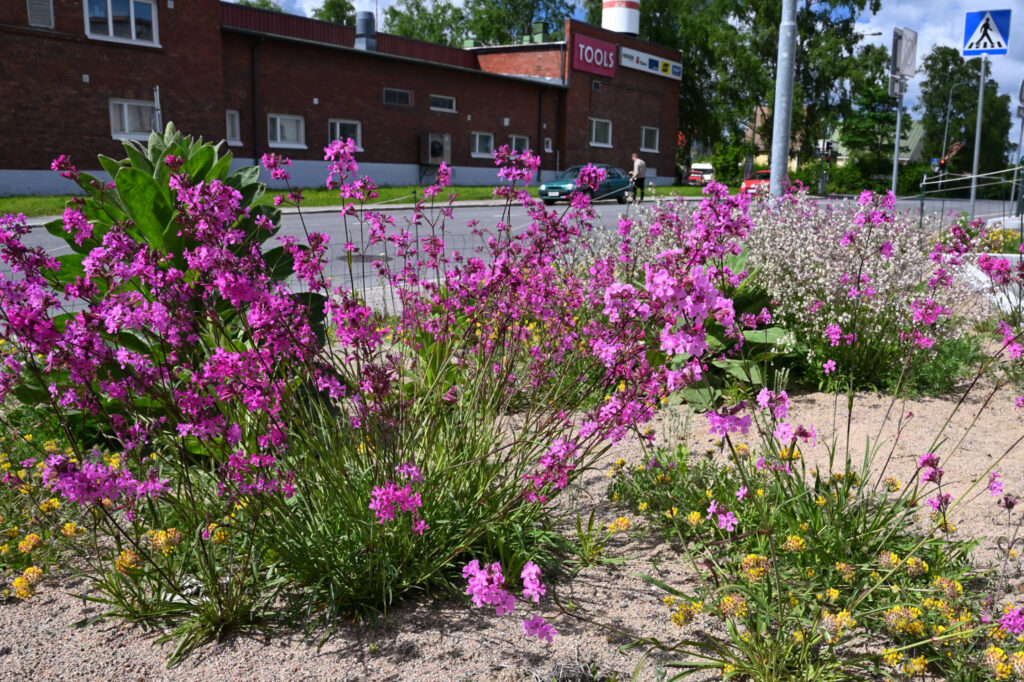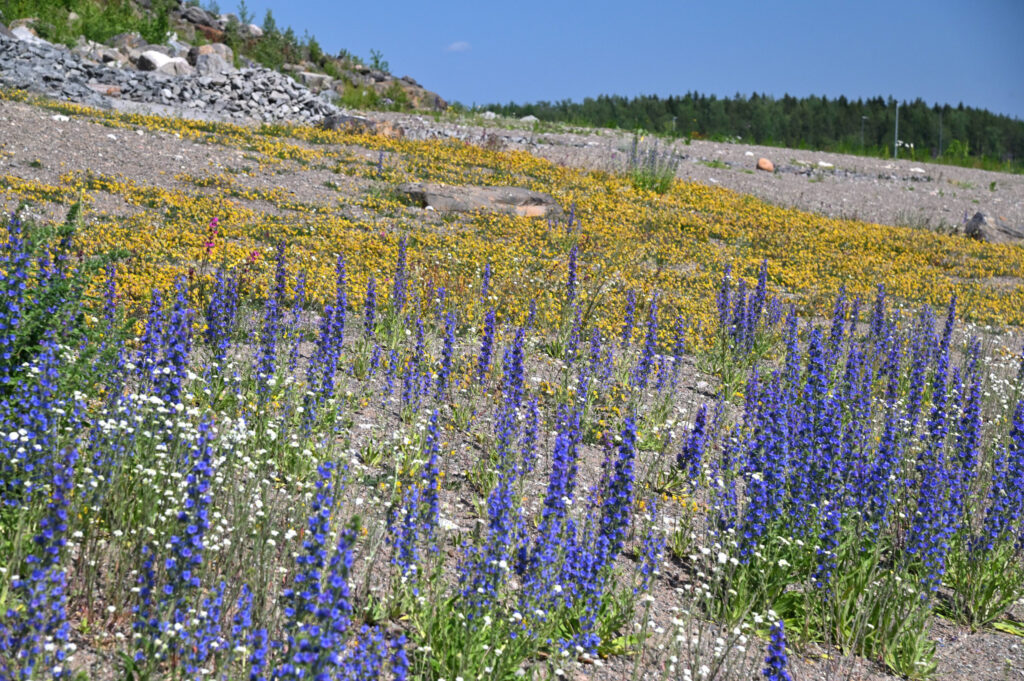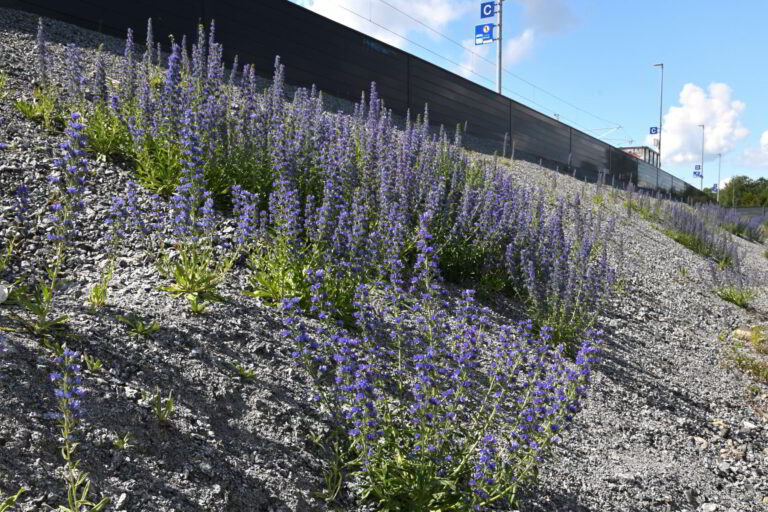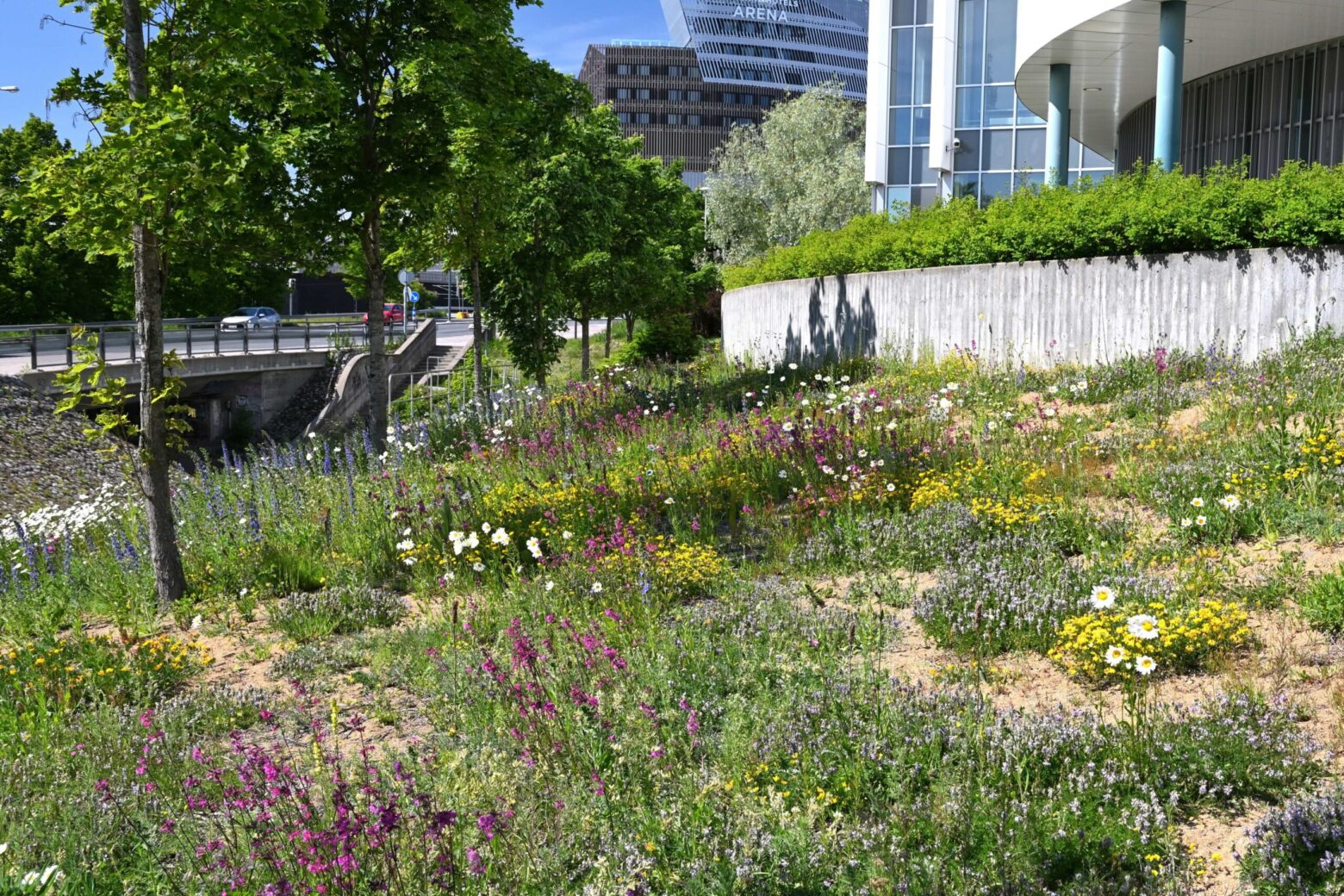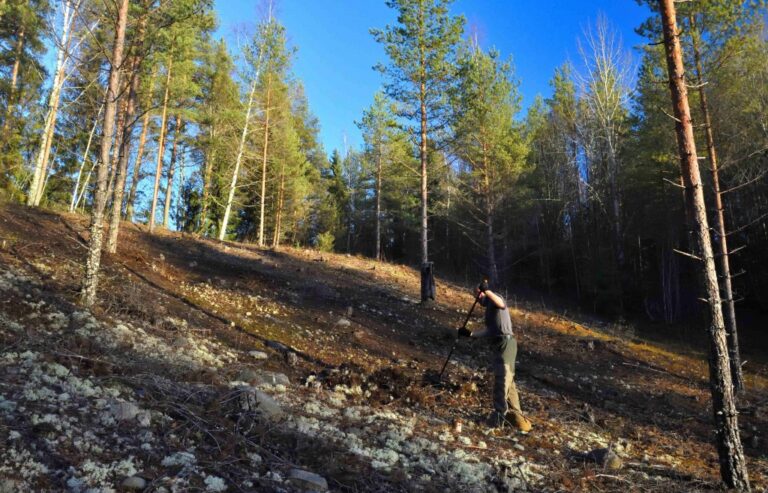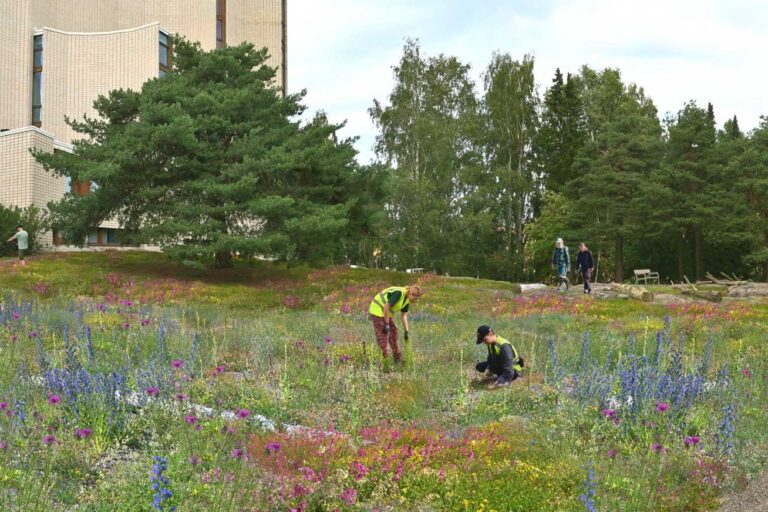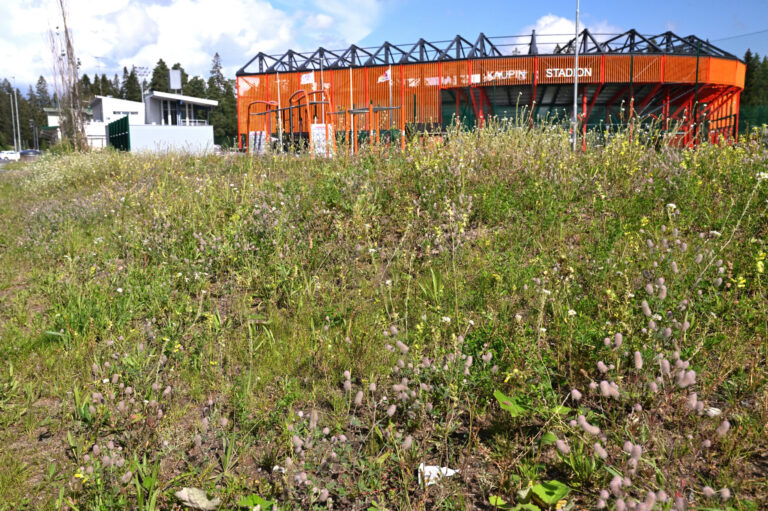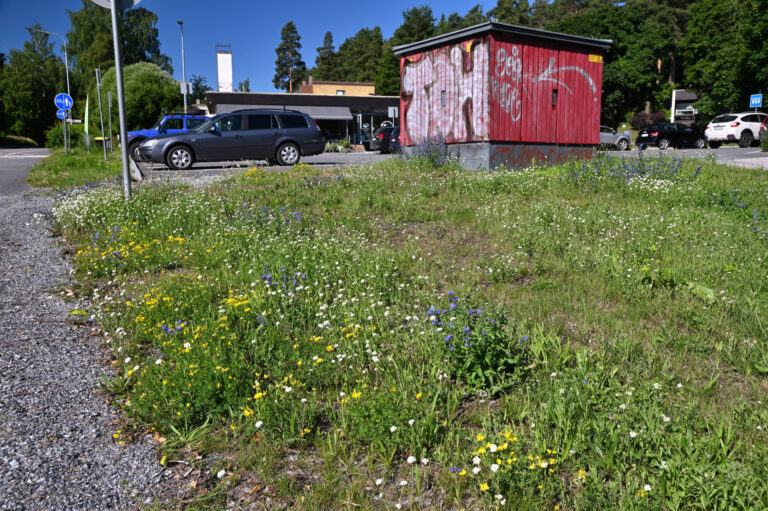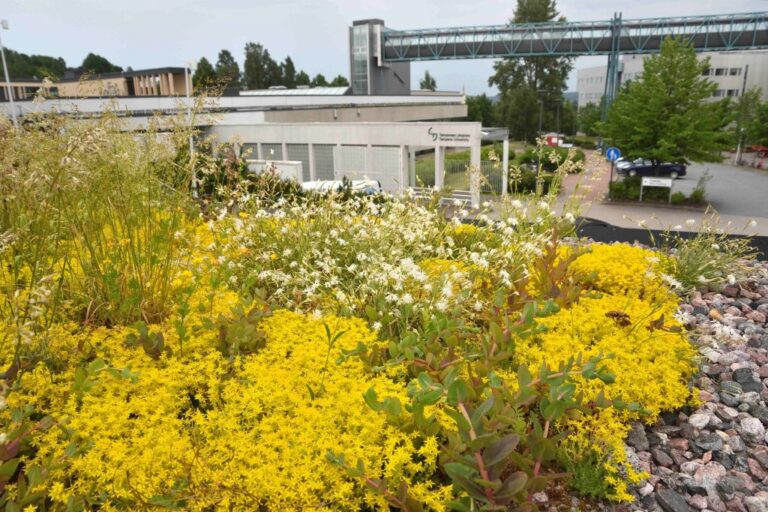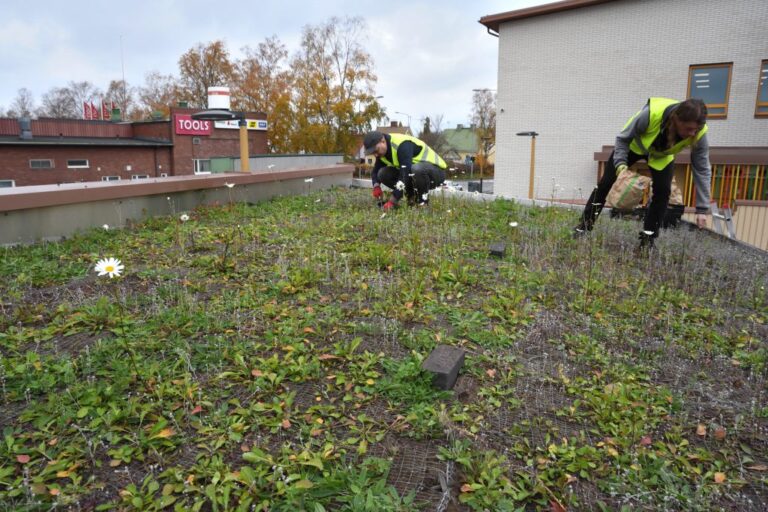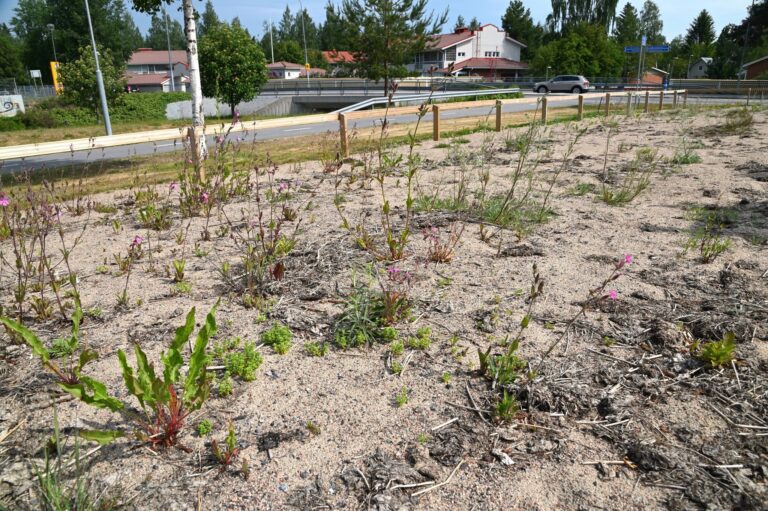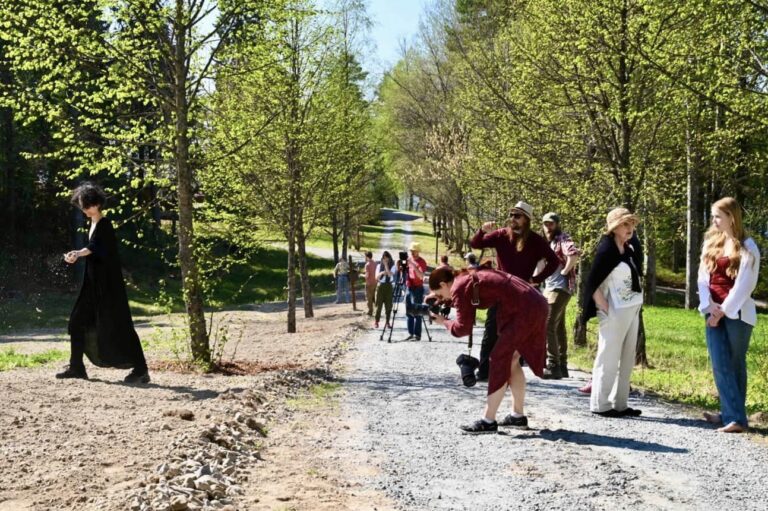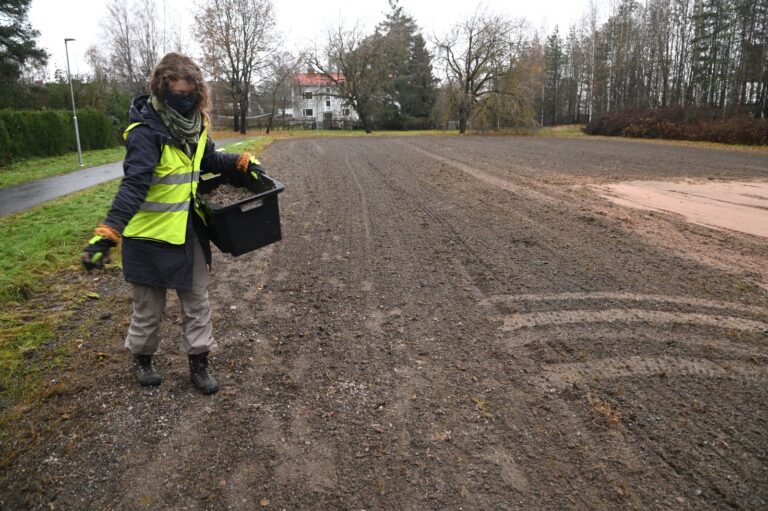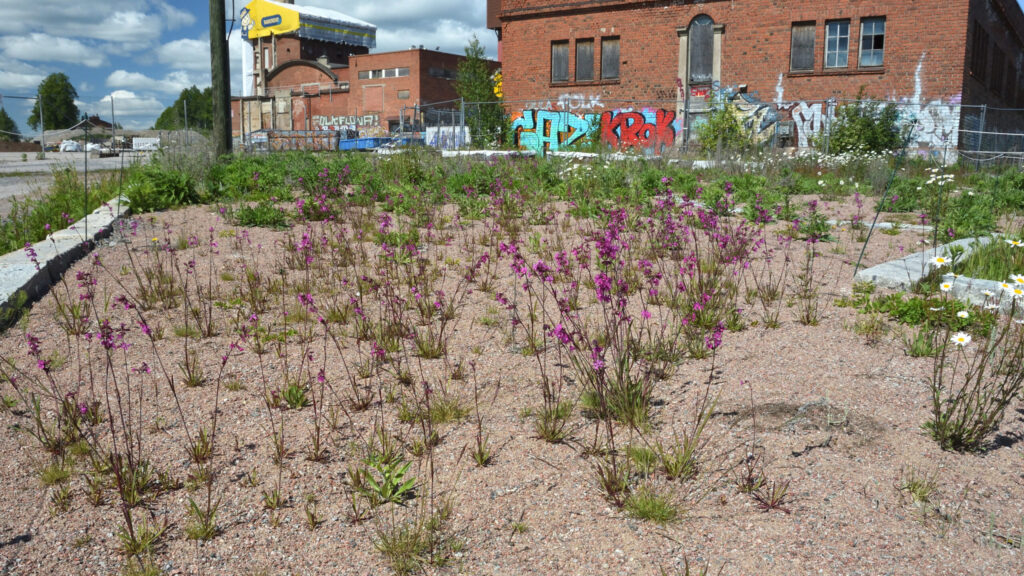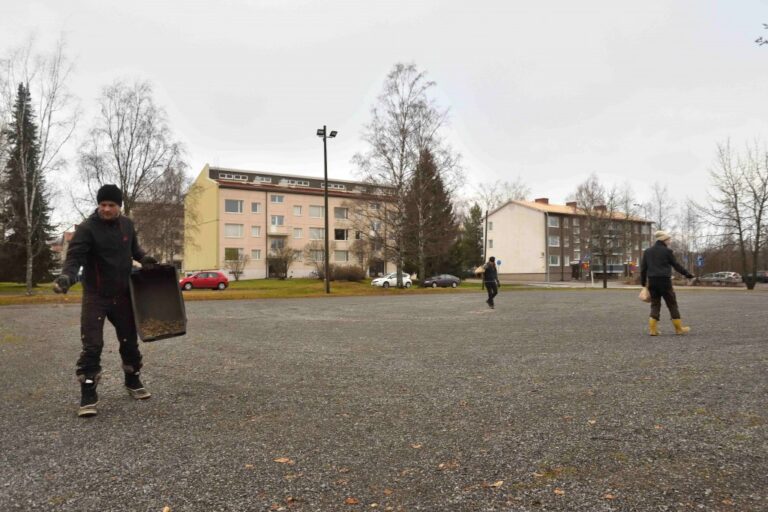Meadows
Open habitats
Meadows, dry meadows and sun-exposed dry meadows are open habitats. Sometimes, to strengthen biodiversity in an open habitat, simply managing the area – by, for example, removing woody plants or invasive species – is enough. We plan and establish new open habitats in varying locations on the ground or building roofs. We establish new open habitats in places where they don’t yet exist. When establishing new meadows, dry meadows, or sun-exposed dry meadows, we use local native seeds with traceable origins, or seedlings grown from such seeds. We use plants and their nectar to attract insects to our open habitats. We also develop novel types of open habitats, such as flowering lawns.
All the meadows, dry meadows, and sun-exposed dry meadows established by Wild Zone are experimental. In every site, we try new ways of starting a meadow, different types of seedbed, different plant species, and different ways of managing habitats. We keep track of how the vegetation grows and document the effect of the experimented methods on the development of the meadows.
School meadows are meadows established on school grounds. Wild Zone plans and starts up the school meadows in cooperation with students and teachers. The founding and upkeep of school meadows are integrated in school tuition, in various subjects. A school meadow can be on the grounds of a kindergarten, elementary school, upper secondary, vocational institute, college, or a university. The character of the school dictates how the school meadow is most beneficial to establish. The students may take part in collecting and sowing the native plant seeds for the meadow, planting seedlings, and fostering and monitoring the meadow.
Sun-exposed dry meadows are dry habitats with low-nutrient sand or gravel as their seedbed. A notable percentage of plant and insect species of sun-exposed areas have regressed. We manage our existing sun-exposed areas and strengthen their biodiversity. We also plan and start up new sun-exposed areas in places where they don’t, but could, exist. When establishing new sun-exposed areas we use local plant species, with emphasis on plants on which rare insects feed. A lot of the dry meadows we have established are sun-exposed. We take the interconnectedness of habitats and constructing a wider sun-exposed network into consideration when starting up new areas.
Flowering, multi-species lawns are a mixture of meadow-like vegetation and grass. Flowering lawns can be mown like a regular lawn. After mowing, a flowering lawn will bloom again since we sow those kinds of native plants there that withstand and compensate for the mowing.
We establish meadows, dry meadows, and sun-exposed dry meadows also on roofs of buildings. On living roofs, we have used the same plant species we have used to set up other open habitats. We select the living roof species so that they don’t grow too high or accumulate too much biomass. We took part in preparing the living roof policy of the City of Tampere.
The principles of Wild Zone include continually experimenting with something new, and developing new methods of fostering nature's biodiversity.
We experiment on different seedbeds for the meadows. Some of the seedbed materials are such that aren't usual in landscaping industrial areas.
We experiment on new plant species.
We experiment on new management methods.
We experiment on new places where meadow-like vegetation can be developed.
We experiment on growing entirely new groups of species, such that aren't actively being grown.
We organize the production of meadows and develop the best solutions for it.
